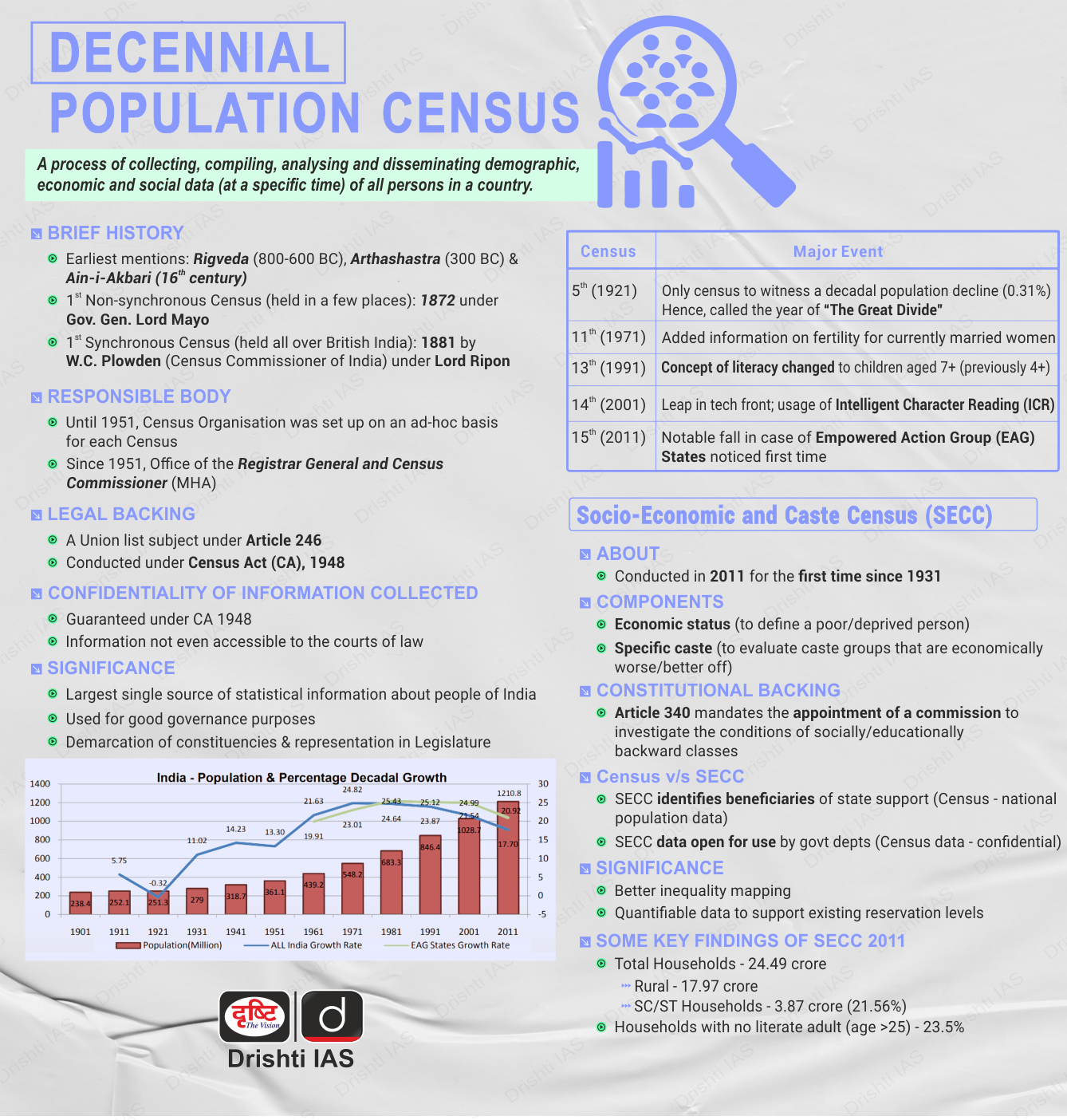Rapid Fire
Caste Enumeration in the Upcoming Census
- 01 May 2025
- 2 min read
The Cabinet Committee on Political Affairs (chaired by Prime Minister) approved the inclusion of caste enumeration in the upcoming population census.
- Historical Context of Caste Data: The last detailed caste data was recorded in the 1931 Census. Although the 1941 Census also collected caste information, it was not published due to the onset of World War II.
- Since 1951, India’s Census has included Scheduled Castes (SCs) and Scheduled Tribes (STs) data but the caste data for Other Backward Classes (OBCs) has been largely absent.
- The absence of caste data has left estimates of OBC population unclear. The Mandal Commission (1979) estimated it at 52%.
- The 2011 Socio-Economic Caste Census (SECC) aimed at better welfare targeting, but much of its caste data remains unpublished, limiting its policy impact.
- Since 1951, India’s Census has included Scheduled Castes (SCs) and Scheduled Tribes (STs) data but the caste data for Other Backward Classes (OBCs) has been largely absent.
- Census: India's first synchronised census occurred in 1881 under W.C. Plowden, the then Census Commissioner of India.
- Currently, the Census is conducted by the Ministry of Home Affairs through the Registrar General and Census Commissioner of India.
- While the Census of India Act, 1948 provides the legal framework, it does not mandate a specific frequency, making the decennial pattern a convention, not a constitutional requirement.
| Read more: Uncertainty Regarding India’s Next National Census |







